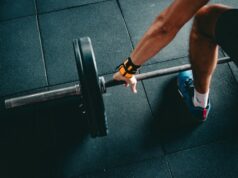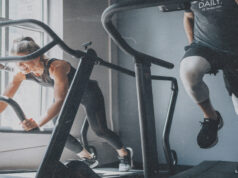An increasing number of people are joining the fitness bandwagon. And this is excellent news. Strength training builds muscle which we naturally lose as we get older. It also raises metabolism aiding in burning fat.
There are many other benefits of strength training, including building new bones and strengthening the muscles.
But how do you know you’re treading on the right path – always track your fitness progress.
Why Tracking Your Fitness is Vital
First and foremost, tracking your progress makes it more likely to reach your goals. Think about it, how would you even know you’ve hit your goal if you do not measure your progress?
Additionally, measuring;
- Motivates you to keep going: That tape measure and weighing machine could be the fuel that fires the hunger to succeed.
- It lends accountability: It’s easier to keep going when you feel accountable in some way. You’re also more likely to work harder.
- It keeps you committed to the plan: In the end, the people who succeed with any form of exercising regimen are those that are committed to the process.
- You can modify the plan if need be: It’s only possible to make the necessary modifications, such as changing the training time and duration, without losing track of the big goal if you’re consistently monitoring your progress.
7 Proven Ways to Track Your Fitness Progress
Fortunately, you can measure your progress in many ways to keep going the hunger to be fitter and leaner. The following are just a few options to consider;
1. Keep a workout journal
You’re probably wondering, “Why do I need to keep a journal when it doesn’t measure my weight?” Well, the journal measures something just as important – your commitment. Are you going to the gym consistently? Are you lifting heavier weights now than when you started? Only the journal can tell you this. The journal will also remind you that you’ve been lifting 70kg weights this week and need to move to the next step next week.
2. Pick up the tape measure
The easiest way to determine whether you’re making progress is to measure selected body parts using a tape measure. The best part is that you don’t need a special tape measure. The usual fabric tape measure is more than sufficient. Measure at least five parts, i.e., your shoulders, chest, hips, legs, and arms. Then measure the same areas again four to six weeks later. Do you notice any changes? Are they positive changes?
3. Weigh yourself periodically
Many people who go to the gym are either trying to lose weight or maintain a good weight. Weighing yourself is an easy way to determine whether you’re meeting those goals. Are you shedding the pounds at a rate that will see you hit your targets at the desired time? Are you losing any weight at all? Or have you gained a few pounds after all the effort? Experts recommend weighing yourself last thing at night or first thing in the morning for consistency.
4. Take a look in the mirror
Another old-style technique you can use to determine whether you’re making positive progress is to check yourself in the mirror. The main benefit of looking at yourself in the mirror is that it gives you the confidence to work harder. Additionally, you’ll always feel better about yourself if you can personally see that you’re becoming the person you’ve always wanted to be. Pay specific attention to the arms, legs, and shoulders.
5. Keep before and after photos
This is another simple but effective method. And, no, you don’t need to purchase a professional camera to take photos of yourself. Your smartphone camera is good enough. Photos are a great motivator that can help you pursue your goals with more vigor and zeal. Additionally, similar to the mirror, photos give you something scales and weighing scales can’t – a good feeling about yourself! Always take front and side photos.
6. Track your body fat percentage
One of the main signs of a fitter person is new, stronger muscles. This often means that you should be shedding the fat while building new muscles. Fortunately, many health and fitness clubs have skinfold calipers and electric conductivity testers to give a rough approximation of your body fat percentage. Make sure the ratio is going down. Unfortunately, measuring your weight alone may not help here as you may be losing weight without gaining muscles. You want both.
7. Consider the DEXA test
The Dual-Energy X-ray Absorptiometry test, i.e., DEXA test, is considered the gold standard for measuring body fat and bone density. It’s also the most accurate way to determine body composition. Patients are exposed to an X-ray beam of varying intensities. By measuring the absorption level at each intensity, the DEXA machine reads body fat content, lean body mass, and bone mineral density. The machine can even break down the data for each body part.
Make It a Habit
If you’re serious about getting maxim value from your workouts, Cincinnati group fitness classes and gym membership, you should consistently track your fitness progress using at least five of the seven methods above.












